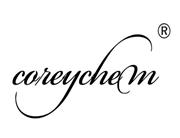| Chemical Properties |
Colorless or pale-yellow liquid. Readily hydrolyzed with liberation of hydrogen chloride; polymerizes easily; soluble in most organic solvents; reacts with alcohol. |
| Uses |
Intermediate for silicones, coupling agent in adhesives and bonds. |
| General Description |
A colorless to pale yellow fuming liquid with a pungent odor. Flash point 16°F. Vapor and liquid may cause burns. More dense than water. Vapors are heavier than air. |
| Reactivity Profile |
Chlorosilanes, such as Trichlorovinylsilane, are compounds in which silicon is bonded to from one to four chlorine atoms with other bonds to hydrogen and/or alkyl groups. Chlorosilanes react with water, moist air, or steam to produce heat and toxic, corrosive fumes of hydrogen chloride. They may also produce flammable gaseous H2. They can serve as chlorination agents. Chlorosilanes react vigorously with both organic and inorganic acids and with bases to generate toxic or flammable gases. |
| Health Hazard |
Inhalation causes irritation of mucous membranes. Vapor irritates eyes. Contact with liquid causes severe burns of eyes and skin. Ingestion causes burns of mouth and stomach. |
| Safety Profile |
Moderately toxic by ingestion, inhalation, and sktn contact. A corrosive irritant to skin, eyes, and mucous membranes. A very dangerous fire hazard when exposed to heat or flame. Reacts violently with water, moist air, or steam to produce toxic and corrosive fumes. When heated to decomposition it emits toxic fumes of Cl-. See also CHLOROSILANES. |
| Purification Methods |
Fractionally distil it at atmospheric pressure. It is water sensitive and is stored in the dark and it is likely to polymerise. [Müller & Schnurrbusch Chem Ber 91 1805 1958, Munkelt & Müller Chem Ber 92 1012 1959, Polarography: Abrahamson & Reynolds Anal Chem 24 1827 1952, Beilstein 4 IV 4258.] |

 China
China






